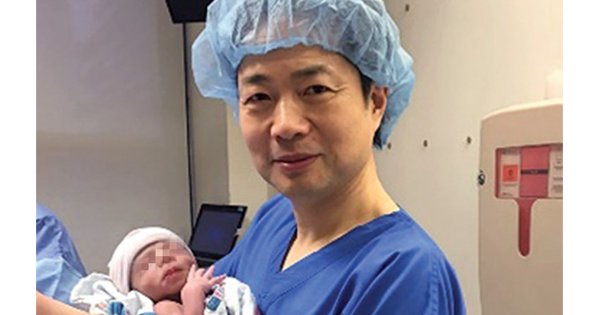Advertisement
Five months ago, a baby boy with DNA from three different parents was born in the UK. New Scientist recently wrote about this "revolutionary" medical case.
The mother and father of this child had been trying to have children for several years. Because the mother had Leigh syndrome, a disorder that fatally affects the nervous system as a child grows during pregnancy or within their first year of being born, the couple's first two children didn't survive.
Anxious to have children, the parents decided to approach Dr. John Zhang at the New Hope Fertility Center in New York City. This Clinic is known for its IVF services, but Dr. Zhang had specifically been focusing on developing a way to avoid having certain genetic diseases pass down from parent to child.
Dr. Zhang had spent the past several years focusing on diseases located in the mitochondria of cells, and Leigh syndrome is, specifically, transferred from a parent's DNA to the child's DNA through the mitochondria.
When Dr. Zhang heard about this parents' situation, he proposed that they introduce a third parent into the equation.
Dr. Zhang originally suggested that both mother and donor had eggs fertilized by the father's sperm. After fertilization, the nuclei in each egg would be removed. The mother's nulceus would be inserted into the fertilized egg of the donor.
While this procedure was medically feasible, the parents didn't want to "destroy" two embryos, so Dr. Zhang developed another method of transferring the DNA.
In a process called spindle nuclear transfer, Dr. Zhang removed the nucleus from the mother's egg and transferred it to a donor egg, that had already had its nucleus removed. This new, combined egg was then fertilized by the father's sperm.
It was from this careful process that the mother was finally able to become pregnant and carry her child to term. Her own mitochondria – that carried the genes for Leigh syndrome – were no longer being passed down to her child because it was the donor's mitochondria developing within her child instead.
At present, spindle nuclear transfer has only been approved by the UK. The procedure itself was performed in Mexico.
Doctors and scientists don't believe there is enough research to widely approve and introduce this method of IVF across the globe, but they are hopeful that more research and more successful births of children with DNA from three different parents will speed up the progress of embryological research around the world.




